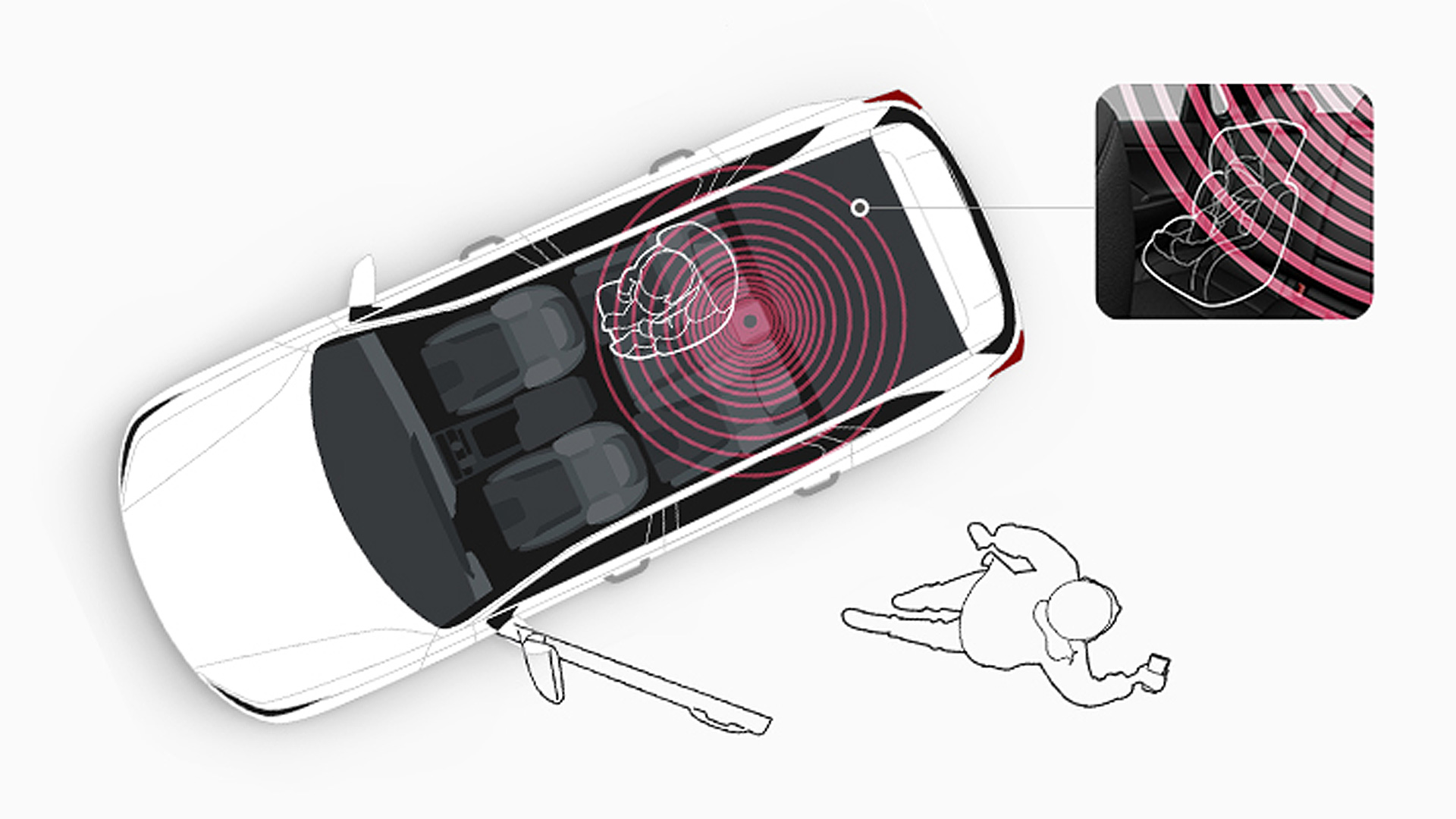
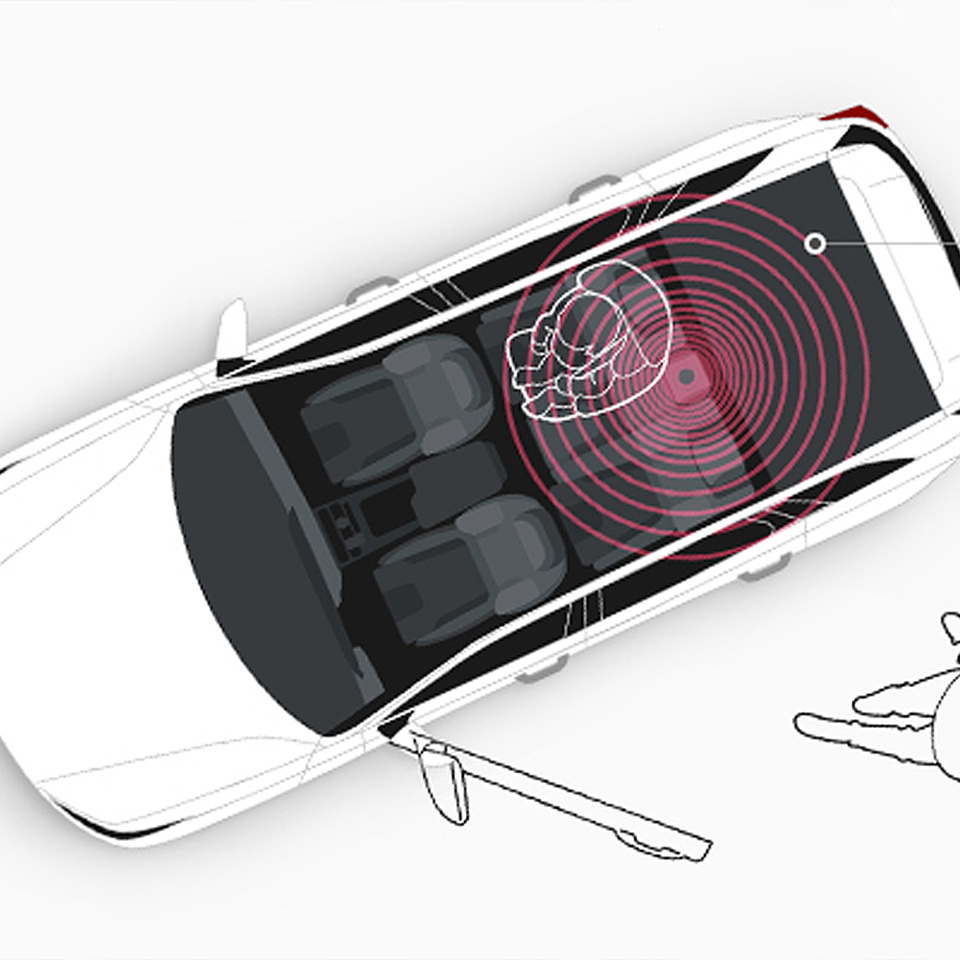


According to the statistics from the Kids and Cars group, 38 children on average have died from being stuck in hot vehicles every year since 1991. It is hard to recognize if someone is still in the back seat when it's a child sleeping in a big car seat under the blanket.U.S. child safety and accident prevention organization, 39 children die of heatstroke in a locked car each year.
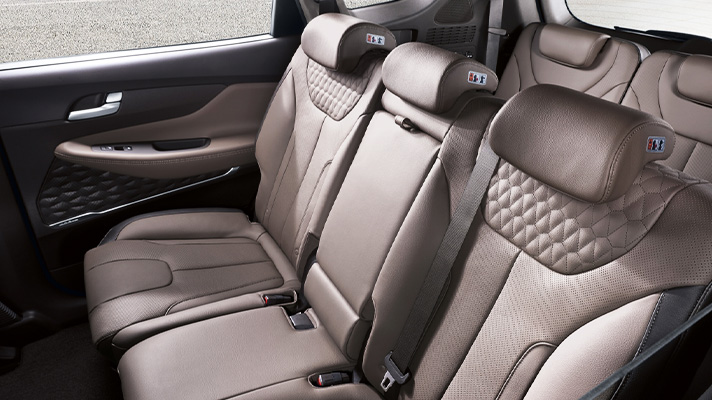
Hyundai Motor Group provides a safety feature that can help prevent such unfortunate occurrences: Rear Occupant Alert (ROA). ROA, first developed in 2018, perceives the rear occupant left behind after the driver leaves the vehicle and alerts the driver to prevent such tragedies.
Rear Occupant Alert System was proven to be effective, and many governments around the world are making regulations regarding it. Back in June 2017, the U.S government was working on a bill called HOT CARS (Helping Overcome Trauma for Children Alone in Rear Seats) Act, that would require all new vehicles be equipped with a sensor and alert system to remind drivers to check the back seats, but it has not yet passed. In the meantime, Hyundai Motor Group has succeeded in commercializing the Rear Occupant Alert System, and other automakers in the U.S also decided to implement the system and make it mandatory.
And, speaking of the European continent, 'Euro NCAP 2025' announced that starting in 2022, it will award four rating points for child presence detection.
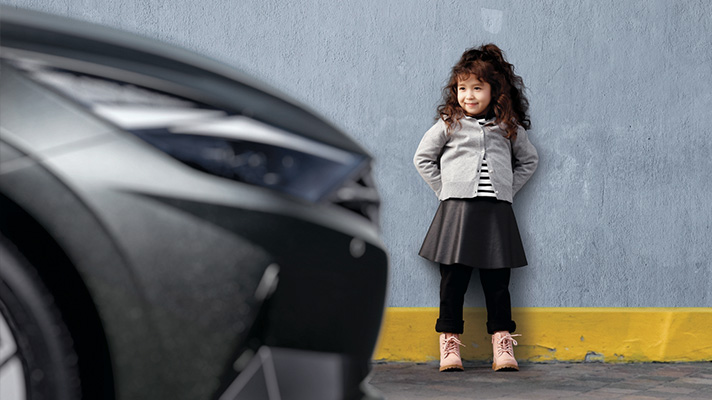
Starting from July 2017, the South Korea government announced a bill that forces all the school buses for children to be equipped with a rear camera or a back-up alarm. And starting from 2018, each school bus is required to have the "sleeping child check" system implemented on the vehicle. Since the Hyundai Santa Fe in 2018, Hyundai Motor Group made its other models ? Hyundai Avante, Sonata, Palisade, Kia Sorento, Soul, Genesis GV80, and G80 - feature the same system.
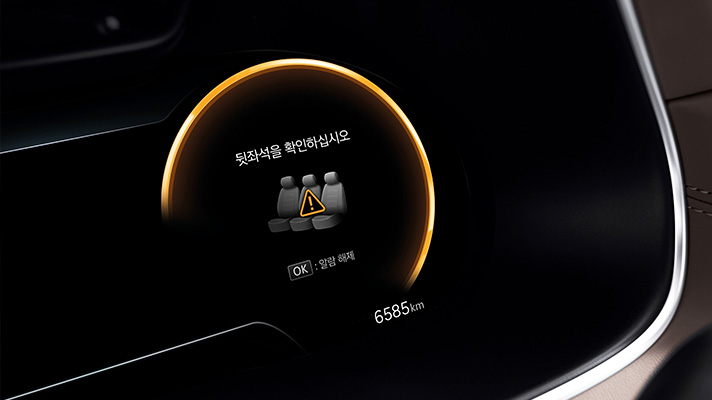
ROA first perceives the rear occupant by the opening of the rear door upon entry. After the driver reaches the destination, shuts the power off, and opens the door to leave the vehicle, a dashboard message pops up to “check the rear seats” along with an audio message. If the driver ignores these messages and locks the vehicle from the outside, ultrasonic sensors on the ceiling automatically start to detect indoor movement for 24 hours. The sensor is capable of detecting movements of not only infants but also pets as well.
Once the in-vehicle movement is detected, the driver is notified in three ways: first, car honks alarms and flashes emergency lights for 25 seconds to notify the driver and the passerby of the existence of a rear occupant. For drivers who have subscribed to Bluelink service, a reminder SMS is delivered to their cellular devices. Finally, if the driver ignores these repeated warnings despite the continued detection of in-vehicle movement, the alarm cycle will repeat for a maximum of 8 times.
But the current system is not perfect yet. Ultrasound loses accuracy over farther distances, so the system has a chance of malfunctioning when it's embedded in a big school bus. Temperature changes or acoustic interferences could affect the system, too, and it may not work when a child remains motionless when he/she is sleeping or covered in a blanket.
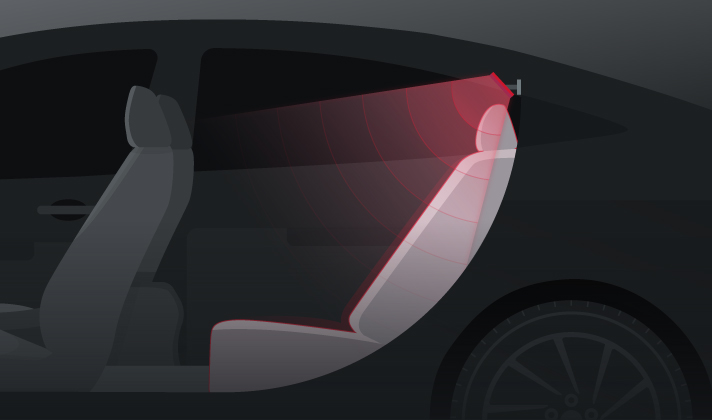
The new rear occupant alert system developed by Hyundai Mobis is radar-based, and it no longer uses ultrasonic sensors. This new radar-based system could overcome the weakness of its ultrasonic predecessor, and become the infrastructure technology that provides passenger safety and convenience in the high-level autonomous driving mode.
Radar has the capability to penetrate a lot of things. Ultrasonic sensors do not recognize infants covered with blankets, but radars can measure even minute movements of the chest and blood flow of passengers by passing through their clothes. So the system is sophisticated enough to distinguish adults, infants, and pets.
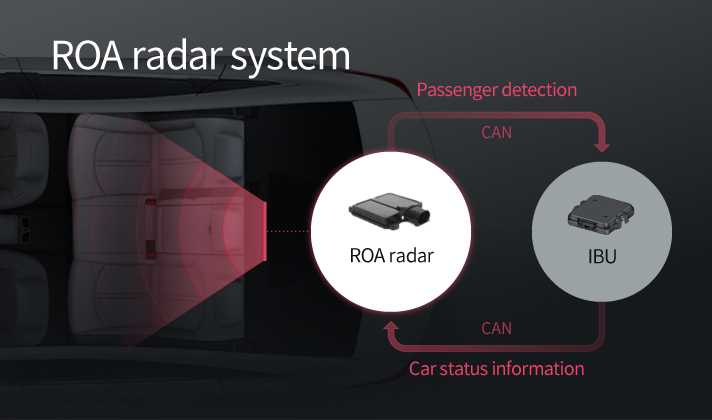
The new rear occupant alert system uses high-resolution radar sensors to detect even the slightest movement of a passenger. The system consists of the radar sensor module hidden in the ceiling, Controller Area Network(CAN), and lastly, the Integrated Body-control Unit(IBU) that generally controls the whole system of a car.
The system uses a 57-66 GHz radar sensors that are usually for Industrial Scientific Medical(ISM) use. Also, the system consists of multichannel high-frequency antennas for higher accuracy. The system is known to have secured electromagnetic reliability so that it works normally near high-voltage lines and railroad tracks.
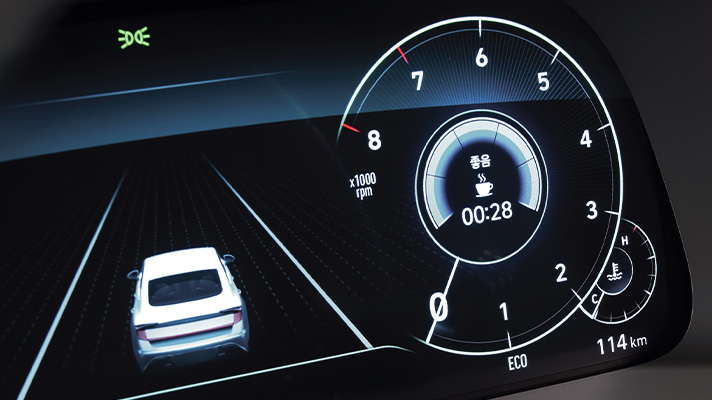
Hyundai Mobis said the ROA system can be combined with other safety technologies such as airbags and seat belts depending on the shape and location of passengers. The radar of ROA can replace the heavy passenger weight sensors, and analyze a variety of bio-signals by penetrating a person’s blood flow for providing quality healthcare service. The company said it aims to use the system on many of its models.
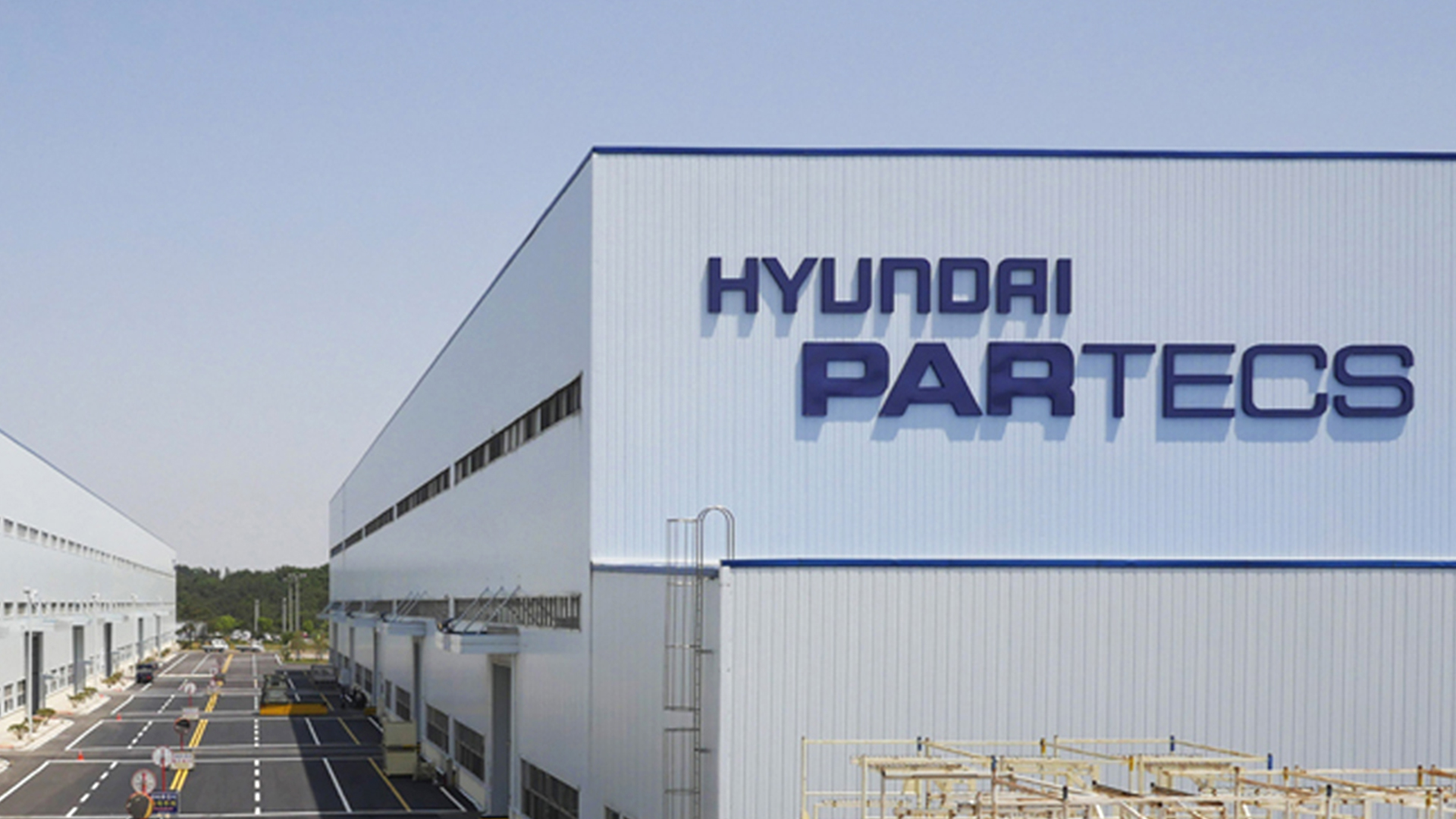
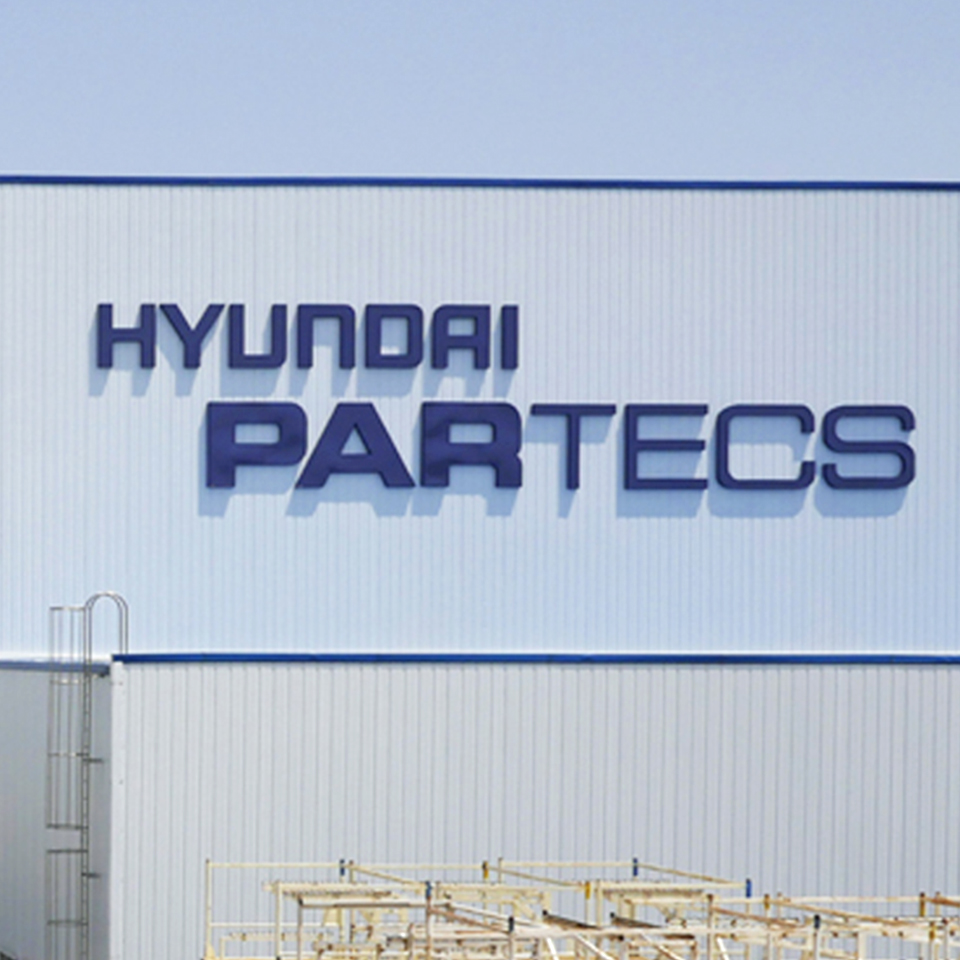
Hyundai Partecs: New Life For Discontinued Cars
2022.06.21 5min read